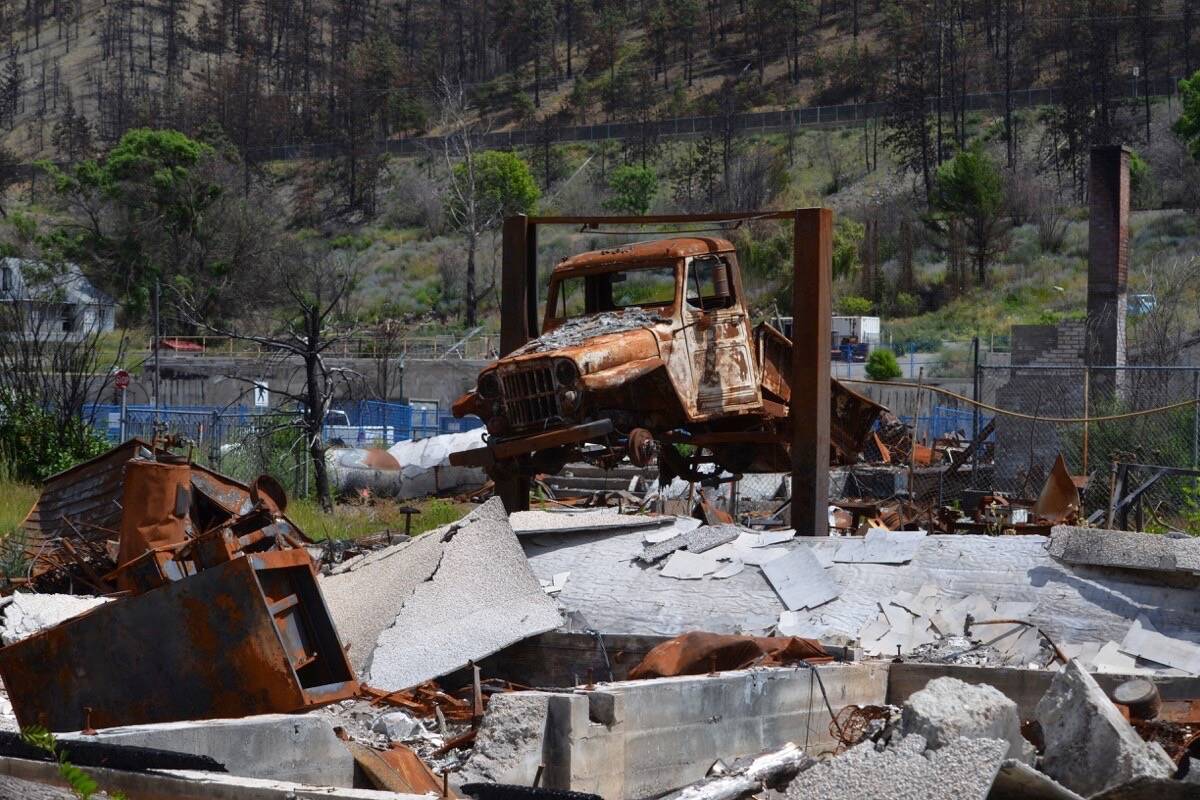The provincial government warns of high temperatures across parts of B.C. this weekend.
The Ministry of Emergency Management and Climate Readiness said temperatures will peak this weekend in the Interior and Peace regions of the province and asked British Columbians to prepare themselves for above-seasonal temperatures.
The appeal comes as heat warnings remain in effect for Fort Nelson and the southern Fraser Canyon, as well as the inland sections of the central and north coasts, including Kitimat and Terrace.
The warning includes Lytton, which recently marked the second anniversary of the fire that destroyed much of the community on June 30, 2021 during a heat dome that killed nearly 700 British Columbians.
RELATED: Lytton residents mark two years since fire destroyed town
Environment and Climate Change Canada issues these warnings in connection with provincial authorities, with thresholds varying regionally. For example, daytime high temperatures near 35 degrees Celsius combined with overnight lows near 18 degrees Celsius are expected through Sunday in the southern Fraser Canyon. Expected temperatures for the inland sections of the North Coast are near 30 degrees Celsius.
Heat warnings may expand to other regions, the ministry said, adding that current forecasts do not include an extreme heat emergency.
But the ministry encourages British Columbians to frequently monitor alerts and forecasts issued by Environment and Climate Change Canada and take steps to prepare what it calls a heat plan. It should identify cool zones inside and outside of homes such as cooling centres, community centres, libraries and outdoor settings.
RELATED: 1 million hectares burned in B.C. as wildfire season just getting started
The provincial government reimburses eligible costs to First Nations and local authorities opening cooling centres during a heat warning or extreme heat emergency. Local authorities may also use the money to transport residents from and to cooling centres.
The provincial warning about temperatures will likely not be the last this summer. Citing data from the Copernicus Climate Change Service in Europe, the UN’s World Meteorological Society said June was the hottest June on record, with unprecedented sea surface temperatures and record low Antarctic sea.
June 2023 was just over 0.5 degrees Celsius above the 1991-2020 average, smashing the previous record of June 2019. Temperatures have remained above seasonal for the early days of July.
Chris Hewitt, WMO Director of Climate Services, said in a release that the exceptional warmth in June and at the start of July has occurred with the weather phenomenon known as El Niño.
“We are in uncharted territory and we can expect more records to fall as El Niño develops further and these impacts will extend into 2024,” Hewitt said. “This is worrying news for the planet.”
RELATED: B.C. cranks up $10 million for 8,000 air conditioners for vulnerable citizens
El Niño is a naturally occurring climate pattern of warming ocean surface temperatures in the central and eastern tropical Pacific Ocean. Episodes of El Niño occur on average every two to seven years with each episode typically lasting nine to 12 months.
For British Columbia, El Niño conditions have historically led to milder winters, but records also show hotter summers because of El Niño, now unfolding against the backdrop of climate change.
Against this backdrop, WMO has warned of a “double whammy” — a very powerful El Niño and human-caused climate change with the proviso that the effects on global temperatures usually play out in the year after El Niño.
That is not to say that B.C. is out of the woods. A drought in the fall of 2022 has set the stage for could end up being the worst wildfire season in the history of B.C.
While its northeastern corner remains the focus of firefighting efforts, authorities fear more southern regions will follow as temperatures are rising with some communities having already broken heat records this week.
@wolfgangdepner
wolfgang.depner@blackpress.ca
Like us on Facebook and follow us on Twitter.

